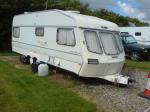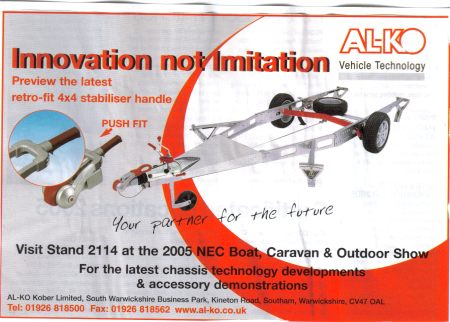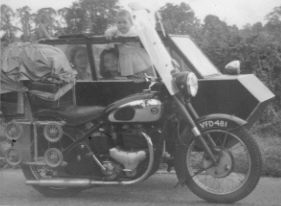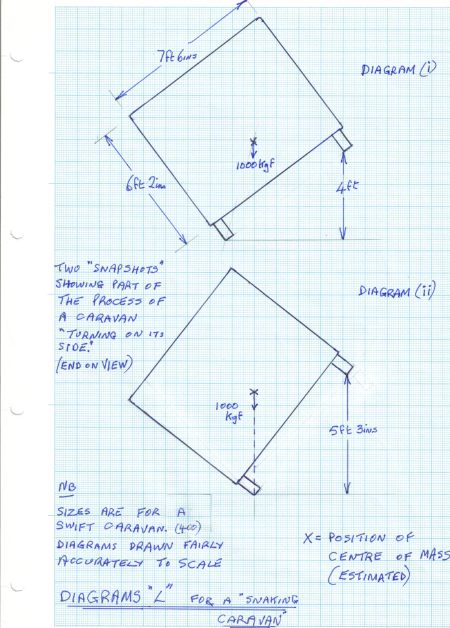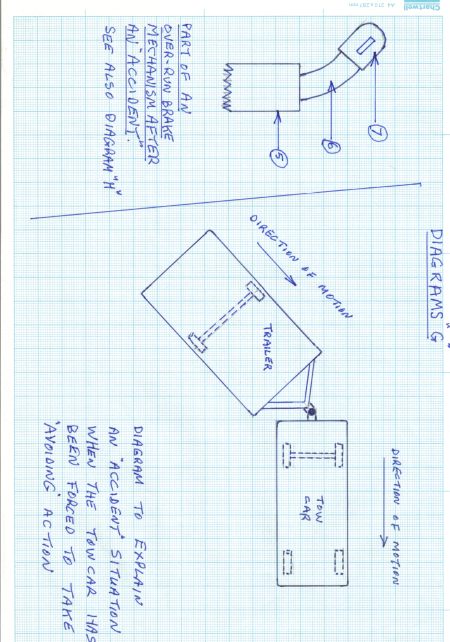caravan accidents 2
February 1, 2013Caravan, Trailer and HGV Accidents
July 7, 2009EDIT 19/04/12
The opinions expressed in this blog are mine and these are not necessarily the same as those of the Institute of Physics
PETER W JONES MInstP
TO SEE ORIGINAL DOCUMENT CONTAINING UNPUBLISHED ITAI REPORT OF 2005
CLICK ON ‘ARCHIVES FOR APRIL 2007″
EDIT 16/01/12
see my blog:- www.westmidlandspoliceauthority.wordpress.com
as my most recent enquiries have revealed a serious scientific educational deficiency in the training of police road traffic accident investigators.
INTRODUCTION
Information on the safe towing of Caravans, School/University Mini Bus Trailers and HGV Trailers, together with a possible explanation of why the Media and Parliament/HMG is seriously short of reliable relevant Science on these subjects.
24/01/10
REPUBLISHING OF ITEM DEFACED BY HACKERS.
see www.caravanaccidents4.wordpress.com
As www.20six.co.uk/roadtrafficaccidents is often off line I have republished some of this in
March 15, 2008
Peter W Jones MInstP
The most recent entries to my blogs are at
www.improvingroadsafety.wordpress.com and
www.caravanaccidents3.wordpress.com
see also
www.caravanaccidents.wordpress.com
and
www.20six.co.uk/roadtrafficaccidents
Advice for Physics and Maths teachers (GCSE and GCE “A” level.)
www.schoolminibusaccidents.wordpress.com and
www.schoolminibustrailers.wordpress.com
.
THIS BLOG WAS ORIGINALLY PUBLISHED IN APRIL 2007.
The original index can be found by srolling down or clicking on
“Archives for April 2007” at the start of this blog top right.
LIST OF ITEMS just BELOW
.
PARA 600
FURTHER DETAIS OF TOWING EXPERIENCE
PARA 601
DIAGRAMS TO ILLUSTRATE THE ACTIONS OF A SNAKING CARAVAN
Para 602
VECTOR DIAGRAMS TO EXPLAIN THE EFFECT OF THE WIND ON A CARAVAN
Para 603
DIAGRAM OF AN OVER RUN BRAKE ACTUATING MECHANISM
Para 604
PHOTOGRAPH AND RELEVANT DETAILS OF A 1950’s CARAVAN
PARA 600; TOWING EXPERIENCE
February 2, 2008ADDENDUM ON TOWING EXPERIENCE; MARCH 2009
Although I have never towed an hgv trailer I must remind readers that essentially the aerodynamics of the trailers I do tow are virtually identical with those of a central (approx) axle/axles HGV trailer.
Caravan/trailer brakes in the UK have not been improved since 1930 as modifications currently on the market in the EU/UK have yet to be critically assessed.
I have no practical experience of electronic braking systems, but am a strong supporter of them in principle. My current Land Rover Discovery is 15 years old (I have owned same for 13 years) and is maintained by a Birmingham/Solihull firm specialising in renovating vintage Land Rovers.
Had Land Rover actually produced their new “green” version of the Discovery I would have purchased one. However the current Discovery weighs 2.7 tonnes compared with my models’ 2 tonnes and consequently needs a much larger engine. It is possible that with electronic braking on my tow car I may agree that the critical safe air speed when towing my Swift 400 caravan is slightly over 50 mph, but it should be noted that when (as reported in the Caravan Club Magazine) Bath University tested a tow car with electronic brakes they did not exceed 50mph when towing a caravan similar to my Swift 400.
Currently I own and am fully insured for towing the above ( see photograph)trailer; the Swift 400; and a recently purchased 23ft twin axle caravan. My boat trailer at 27 years old is not currently road worthy but I am having it modified this year. The wheels springs and axle will be removed and replaced with 4 wheels with no brakes or springs. It can then be winched on to a hired car transporter when necessary.
Peter W Jones MInstP
The above photograph depicts my latest purchase (May 2007). Apologies for the software bug producing two images.
I had resolved to purchase nothing further in this field until I could buy something with electric brakes, but I needed the above to continue enjoying my retirement during the Summer months.
Using the internet I went to an enormous amount of trouble to find a trailer with electric brakes, but none are available in the UK.
The Daxara 198F was sold to myself by indespension.co.uk and the chassis was made by ALKO. As with all caravans and most trailers the ALKO suspension depends on a solid piece of rubber/plastic which is compressed and the system should not need a hydraulic damper. My first new car (an 850cc Morris Mini Minor) acquired in 1960, had this type of system and, by the standards of that era, was quite satisfactory.
However, the Daxara trailer has a problem with undue “bounce” whether it is lightly or heavily loaded. It was sold with hydraulic dampers, but these do not eliminate all the vertical oscillations that are set off by quite minor road faults.
I am however quite satisfied; I have no intention of exceeding 50mph air speed as I have previously explained. Athough this type of trailer would be safer with electric brakes, an aerofoil to produce down force would have to be quite high if towing was with a car, but with a van or 4×4 I doubt whether it would be feasible.
When I wished to tow there was hardly any wind, and at 50mph I experienced no trouble when overtaken by large vehicles.
I noticed that Jeremy Clarkson ( BBC 2) was showing off a very expensive sports car this week with a computer controlled aerofoil, but the rally car on the same programme seemed to have a boot mounted aerofoil which I thought was too low to be effective. The air flow over the car roof would possibly create some turbulance and reduce the effect of the aerofoil. The sports car aerofoil was also low, but due to the exceptionally good aerodynamic shape of the car, I thought it could produce effective downforce on the wheels. The million euro VW sports car ( the Bugatti Veyron) has a similar computer controlled areofoil, but this seems to be higher. I cannot see any justification for introducing aeofoils for most cars on UK roads. However, as they get lighter to reduce the carbon foot print, a variable pitch aerofoil may well be necessary.
I have experienced sideways drift in a gale force cross wind at 70 mph when driving my Rover SDI 3500 V8. This was lower than most saloon cars, very heavy, and was carrying three adults plus luggage. I did not expect this to happen, but I cured the problem by slowing down and I think this is the best solution.
I “sensed” the drifting so had a second chance to correct my error and slow down. When towing it is not possible to feel oscillations of a trailer until they are quite considerable. We need electronic sensors to detect snaking and apply the trailer brakes, but electric trailer brakes would be a good start as it is safe to apply your foot to the tow car brake pedal when snaking begins, but highly dangerous to do the same thing with over run brakes. In the case of trailers aerofoils are needed to improve braking when snaking takes place. Aerofoils would also reduce the possibility of snaking by increasing friction between tyres and the road.
.
Addendum December 2008
I have now had the above trailer for two seasons and have covered about 2000 miles with this new item in tow with my Discovery.
I have still not experienced any snaking when being overtaken by HGV’s, but I shall not be increasing my air speed of 50 mph. (NB. As there are no suitable anemometers available at present I only know my air speed accurately when there is no wind and road speed = air speed).
I have also not had to brake sharply in an emergency situation so have found the over run brake satisfactory. I have been wearing a seat belt since 1967 and have never had to rely on same, but I strongly support use of seat belts and improved brakes for caravans and trailers.
School/University Mini buses are lighter than Land Rovers and are more likely to be destabilised during heavy braking (with over run trailer brakes) if trailer and tow car are not in a straight line. Just another reason to stick to 50 mph until better brakes can be obtained. In an emergency braking situation your trailer may start off in line with the tow car but as soon as a slight skid starts this will no longer apply and the over run brakes may cease to operate. Electric, Pneumatic or Hydraulic Trailer Brakes operate as soon as the tow car driver pushes the brake pedal down and stay applied until the brake pedal pressure is eased.
See also www.caravanaccidents3.wordpress.com
January 23, 2008
Peter W Jones MInstP
The above left photo and large item below depicts a media ad for an electric caravan mover.
I show this because I did not have a photograph of my other current caravan.
My caravan is on the right above. I have owned it for about 16 years.
It is a Lunar Delta 590 Twin Axle.
I had one serious snake with this van when I was travelling at about 50 mph in a 50 mph road works on the M5. I was caught unawares when a large HGV passed at a highly illegal speeed. ie the bow wave caused the snaking.
It is a terrible situation to face as the slightest application of the car brakes may have a dangerous effect on the over run caravan brakes that only work if the van catches up with the car.
As I have explained at length elsewhere in these blogs if the van catches up with the tow car when the former is not in a dead straight line with the latter, the tow car could be spun round.
I have my car radio on for “traffic announcements” when on holiday in the West Country and hardly a day goes by without a report of an over turned caravan holding up traffic. These only count for “accident statistics” if a person is killed or seriously injured. As other road users can view the build up of a serious snake and take avoiding action the incidence of injuries will be much lower than for most other types of accident.
Edited 30-09-09

January 23, 2008
This is a media ad for an ALKO stabiliser. I show the above because it depicts the spare wheel in place just to the rear of the axle.
My Swift touring van has a recessed position in the front locker compartment for the spare wheel, but to get the weight on the towing hitch down to the max 75kg permitted by Land Rover for my Discovery I had to relocate my spare wheel as shown above. This is a common problem, even with some current new caravans.
January 23, 2008
THREE WHEELS WITH INDEPENDENTLY OPERATED BRAKES
A great many people will be sceptical concerning the use of trailer brakes to conrol snaking. However, I did a similar thing in the mid 1950’s.
The above BSA 650cc twin cylinder motor cycle and side car had an independently operated cable control to the drum brake on each wheel.
To negotiate a right hand bend I often had to apply the front brake only, and for a left hand bend, particularly with a well loaded side car, it was often necessary to brake the side car only.
For normal straight line braking all three brakes could be applied at the same time.
It is now possibly not legal for the driver to brake a trailer independently of the tow car, but the law does allow this to be done electronically. This cannot be done with over run brakes (without an electric/electronic modification), but it is possible if the trailer brakes have pneumatic, hydraulic or electric control.
Bath University have shown in wind tunnel tests that aerofoils producing downforce improve caravan stability, and if independent trailer braking is electronically used as well, the maximum safe speeds I have estimated can be increased.
see also the final section of www.aerodynamicsoftrailers2.wordpress.com
PARA 601; DIAGRAMS; SNAKING CARAVANS
January 23, 2008These diagrams are intended to amplify my explanation of the marks made on the road in a typical caravan snaking accident. See www.20six.co.uk/roadtrafficaccidents (paragraph 17a).
I would postulate that something very similar will be found after snaking/jack knifing accidents with HGV trailers with approximately central axles.
PARA 602; VECTOR DIAGRAM; EFFECT OF WIND ON CARAVAN
January 23, 2008I read in Standen’s 1999 thesis that when the wind is at a slight angle to the direction of travel a trailer will try to “line up with the wind” as is the case with a weather vane. However, in actual practise he pointed out that the trailer will swing further than this only stopping when the force of the wind is insufficient to maintain the position; the trailer will then swing back so setting up “snaking.”
It can be seen from my diagram that a side wind of 30mph and a head wind of 40 mph (due to the forward motion of the tow car/caravan) will give a resultant “apparent” wind speed of 50mph in the direction “R” shown in the digram.
ANEMOMETERS
I can use the above diagram to explain how my suggestion for revised software for the gill/biral anemometers will operate.
If R represents the apparent wind direction and speed of 50 mph as recorded by the anemometer fixed to a tow vehicle it can be seen from the diagram that the air speed of the vehicle is 40mph and the side wind component is 30 mph. The diagram above is drawn to scale using graph paper.
This method cannot be used for automatic calculation by a computer but the values obtained from the scale drawing could be calculated using mathematical formula and these could be programmed in so that the air speed and side wind component would appear on the anemometer display.
It must be remembered that a wind speed of 50 mph is fairly common. The met office will certainly not be putting out any warnings of buildings being damaged in these circumstances, but if your tow vehicle was equipped with an anemometer you can see from the above that you would have an air speed of 40 mph whilst parked.
It will be some time before the manufacturers of trailers will admit that there is a serious problem and follow the practise of the air craft industry, so in the meantime we can only judge for ourselves the critical air speed at which our trailer is likely to snake, and the minimum side wind component that will cause snaking.
PARA 603; OVER RUN BRAKES
January 23, 2008The top diagram above shows the result of an over run brake telescopic section having had a sideways knock in a collision with a large vehicle when the trailer was stored.
The arm has been stretched and compressed on opposite sides and the elastic deformation is permanent. In the second diagram above the tow car is out of line with the trailer. If it is necessary to apply the tow car brakes in this situation the trailer will try to continue in the direction shown and in so doing exert a force on the telescopic arm which will tend to temporarily deform its shape very slightly ( as shown in the extreme case in the first diagram), with the result that the arm will not slide into the housing to apply the brakes. I have also given additional reasons (in other paragraphs) which also prevent the brakes being applied in this situation.
With electric pneumatic or hydraulic actuating mechanisms the brakes come on when the tow car driver depresses the brake pedal and so very much reduce the possability of the trailer jack knifing.


